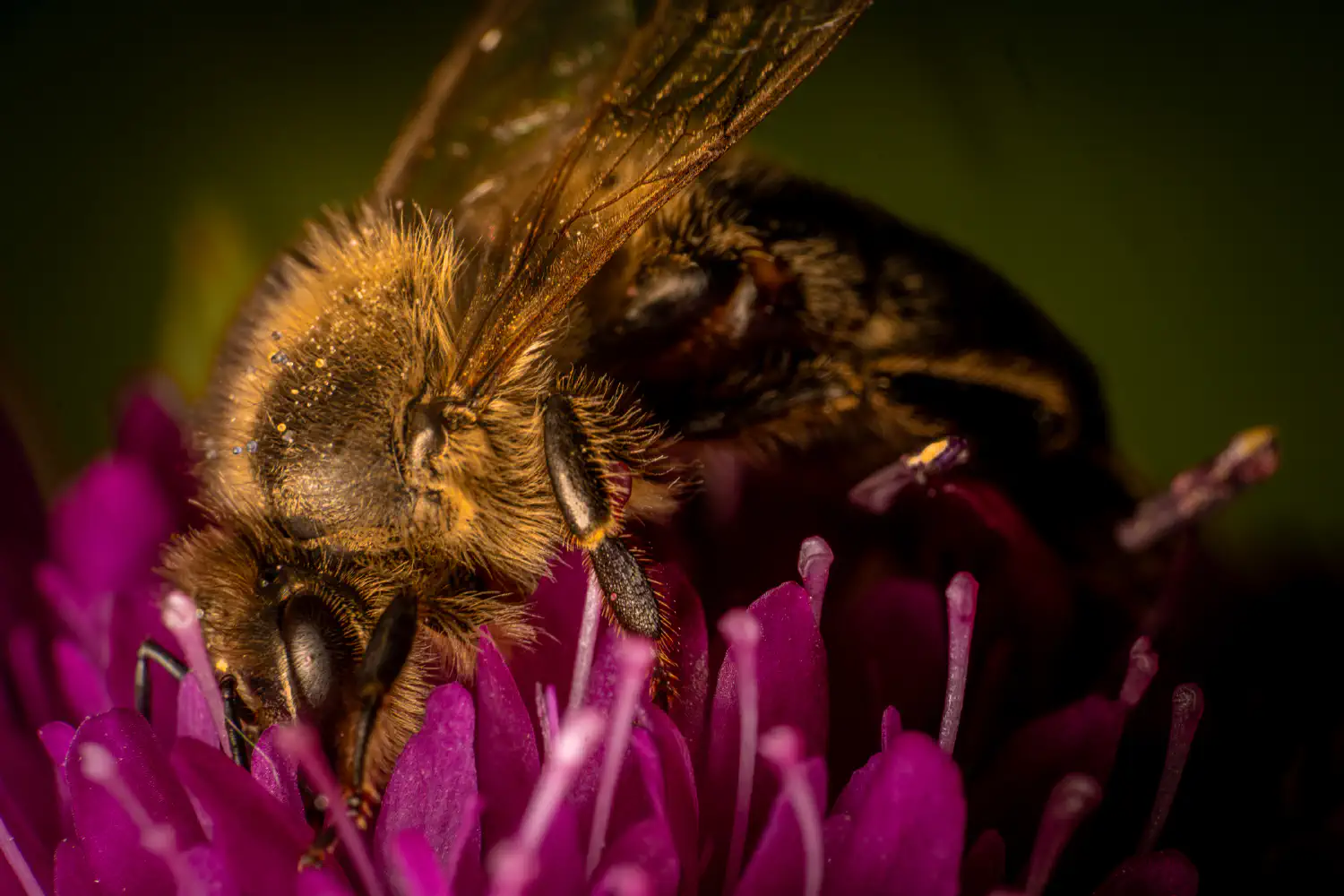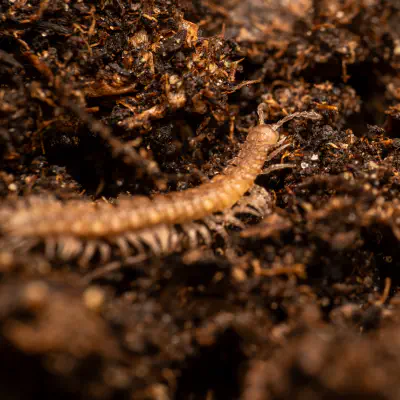Arthropods Lat. “Arthropoda“
An arthropod (from Greek ἄρθρον arthron, “joint” and πούς pous, “foot”) is an invertebrate animal having an exoskeleton (external skeleton), a segmented body, and paired jointed appendages. Arthropods form the phylum Euarthropoda, which includes insects, arachnids, myriapods, and crustaceans. The term Arthropoda as originally proposed refers to a proposed grouping of Euarthropods and the phylum Onychophora. Arthropods are characterized by their jointed limbs and cuticle made of chitin, often mineralised with calcium carbonate. The arthropod body…
Hierarchy
Etymology
The word arthropod comes from the Greek ἄρθρον árthron ‘joint’, and πούς poús (gen. ποδός podós) ‘foot’ or ’leg’, which together mean “jointed leg”, with the word “arthropodes” initially used in anatomical descriptions by Barthélemy Charles Joseph Dumortier published in 1832. The designation “Arthropoda” appears to have been first used in 1843 by the German zoologist Johann Ludwig Christian Gravenhorst (1777–1857). The origin of the name has been the subject of considerable confusion, with credit often given erroneously to Pierre André Latreille or Karl Theodor Ernst von Siebold instead, among various others. Terrestrial arthropods are often called bugs. The term is also occasionally extended to colloquial names for freshwater or marine crustaceans (e.g., Balmain bug, Moreton Bay bug, mudbug) and used by physicians and bacteriologists for disease-causing germs (e.g., superbugs), but entomologists reserve this term for a narrow category of “true bugs”, insects of the order Hemiptera.
Description
Arthropods are invertebrates with segmented bodies and jointed limbs. The exoskeleton or cuticle consists of chitin, a polymer of N-Acetylglucosamine. The cuticle of many crustaceans, beetle mites, the clades Penetini and Archaeoglenini inside the beetle subfamily Phrenapatinae, and millipedes (except for bristly millipedes) is also biomineralized with calcium carbonate. Calcification of the endosternite, an internal structure used for muscle attachments, also occurs in some opiliones, and the pupal cuticle of the fly Bactrocera dorsalis contains calcium phosphate.
Reproduction and development
A few arthropods, such as barnacles, are hermaphroditic, that is, each can have the organs of both sexes. However, individuals of most species remain of one sex their entire lives. A few species of insects and crustaceans can reproduce by parthenogenesis, especially if conditions favor a “population explosion”. However, most arthropods rely on sexual reproduction, and parthenogenetic species often revert to sexual reproduction when conditions become less favorable. The ability to undergo meiosis is widespread among arthropods including both those that reproduce sexually and those that reproduce parthenogenetically. Although meiosis is a major characteristic of arthropods, understanding of its fundamental adaptive benefit has long been regarded as an unresolved problem, that appears to have remained unsettled. Aquatic arthropods may breed by external fertilization, as for example horseshoe crabs do, or by internal fertilization, where the ova remain in the female’s body and the sperm must somehow be inserted. All known terrestrial arthropods use internal fertilization. Opiliones (harvestmen), millipedes, and some crustaceans use modified appendages such as gonopods or penises to transfer the sperm directly to the female. However, most male terrestrial arthropods produce spermatophores, waterproof packets of sperm, which the females take into their bodies. A few such species rely on females to find spermatophores that have already been deposited on the ground, but in most cases males only deposit spermatophores when complex courtship rituals look likely to be successful.
Most arthropods lay eggs, but scorpions are ovoviviparous: they produce live young after the eggs have hatched inside the mother, and are noted for prolonged maternal care. Newly born arthropods have diverse forms, and insects alone cover the range of extremes. Some hatch as apparently miniature adults (direct development), and in some cases, such as silverfish, the hatchlings do not feed and may be helpless until after their first moult. Many insects hatch as grubs or caterpillars, which do not have segmented limbs or hardened cuticles, and metamorphose into adult forms by entering an inactive phase in which the larval tissues are broken down and re-used to build the adult body. Dragonfly larvae have the typical cuticles and jointed limbs of arthropods but are flightless water-breathers with extendable jaws. Crustaceans commonly hatch as tiny nauplius larvae that have only three segments and pairs of appendages.
Interaction with humans
Crustaceans such as crabs, lobsters, crayfish, shrimp, and prawns have long been part of human cuisine, and are now raised commercially. Insects and their grubs are at least as nutritious as meat, and are eaten both raw and cooked in many cultures, though not most European, Hindu, and Islamic cultures. Cooked tarantulas are considered a delicacy in Cambodia, and by the Piaroa Indians of southern Venezuela, after the highly irritant hairs – the spider’s main defense system – are removed. Humans also unintentionally eat arthropods in other foods, and food safety regulations lay down acceptable contamination levels for different kinds of food material. The intentional cultivation of arthropods and other small animals for human food, referred to as minilivestock, is now emerging in animal husbandry as an ecologically sound concept. Commercial butterfly breeding provides Lepidoptera stock to butterfly conservatories, educational exhibits, schools, research facilities, and cultural events. However, the greatest contribution of arthropods to human food supply is by pollination: a 2008 study examined the 100 crops that FAO lists as grown for food, and estimated pollination’s economic value as €153 billion, or 9.5 per cent of the value of world agricultural production used for human food in 2005. Besides pollinating, bees produce honey, which is the basis of a rapidly growing industry and international trade. The red dye cochineal, produced from a Central American species of insect, was economically important to the Aztecs and Mayans. While the region was under Spanish control, it became Mexico’s second most-lucrative export, and is now regaining some of the ground it lost to synthetic competitors. Shellac, a resin secreted by a species of insect native to southern Asia, was historically used in great quantities for many applications in which it has mostly been replaced by synthetic resins, but it is still used in woodworking and as a food additive. The blood of horseshoe crabs contains a clotting agent, Limulus Amebocyte Lysate, which is now used to test that antibiotics and kidney machines are free of dangerous bacteria, and to detect spinal meningitis. Forensic entomology uses evidence provided by arthropods to establish the time and sometimes the place of death of a human, and in some cases the cause. Recently insects have also gained attention as potential sources of drugs and other medicinal substances. The relative simplicity of the arthropods’ body plan, allowing them to move on a variety of surfaces both on land and in water, have made them useful as models for robotics. The redundancy provided by segments allows arthropods and biomimetic robots to move normally even with damaged or lost appendages.
Although arthropods are the most numerous phylum on Earth, and thousands of arthropod species are venomous, they inflict relatively few serious bites and stings on humans. Far more serious are the effects on humans of diseases like malaria carried by blood-sucking insects. Other blood-sucking insects infect livestock with diseases that kill many animals and greatly reduce the usefulness of others. Ticks can cause tick paralysis and several parasite-borne diseases in humans. A few of the closely related mites also infest humans, causing intense itching, and others cause allergic diseases, including hay fever, asthma, and eczema. Many species of arthropods, principally insects but also mites, are agricultural and forest pests. The mite Varroa destructor has become the largest single problem faced by beekeepers worldwide. Efforts to control arthropod pests by large-scale use of pesticides have caused long-term effects on human health and on biodiversity. Increasing arthropod resistance to pesticides has led to the development of integrated pest management using a wide range of measures including biological control. Predatory mites may be useful in controlling some mite pests.
See also
Dorsal lobe Invertebrate paleontology Minibeasts
External links
“Arthropod”. The Encyclopedia of Life. Venomous Arthropods Archived 31 January 2010 at the Wayback Machine chapter in United States Environmental Protection Agency and University of Florida/Institute of Food and Agricultural Sciences National Public Health Pesticide Applicator Training Manual Arthropods – Arthropoda Insect Life Forms
Ancestry Graph
Further Information
„Arthropods“ on iNaturalist.org
Copyright

This article uses material from the Wikipedia article Arthropoda the free encyclopedia Wikipedia which is released under Creative Commons Attribution-ShareAlike 4.0 International License). On Wikipedia a list of authors is available.

Little beings in print
Order our calendars and books today!
Compiled with love. Printed sustainably. Experience our little beings even more vividly in print. All our publications are available for a small donation.





